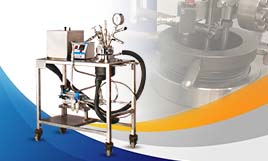All You Need to Know About Furnaces for Laboratories
A laboratory furnace is a critical part of any laboratory setting as it is responsible for performing several functions. Furnaces are basically convection appliances that are extensively used in the manufacturing industry and field of science.
Whenever there is a need for a furnace, the first factor that experts’ consider is the temperature at which they desire it to operate. Of course, there are also factors such as selecting the suitable furnace configuration and design as there are a few options available such as tubular furnaces or chamber furnaces.
Keep reading till the end to learn more about laboratory furnaces.
Operation of A Laboratory Furnace
Similar to other furnace operations, a laboratory furnace uses a heat source for heating a sample within the chamber of the furnace. The process of convective heat transfer is used for heating the furnace. This heat transfer works either by mechanical or gravitational convection.
In case of mechanical convection, the lab furnaces use baffles and blowers in the chamber. This helps in heating the chamber furnace quicker than ever and more importantly in a uniform way.
Whereas, for gravitation convection, warmer air displaces the cooler air, therefore guiding it towards the heating element until the full chamber hits the desired temperature. This method is known for its uneven heat distribution, energy wastage and a prolonged preheat time.
Looking at the aforementioned convection methods, it only makes sense that mechanical convection is a popular choice among experts. Aside from this, some of the fundamental operations that lab furnaces perform are baking - the sample is heated without dehumidification, drying - the moisture removal function from the sample and curing - the sample is physically or chemically altered.
Features to Consider for Typical Laboratory Furnaces
Laboratory furnaces can be manufactured and designed so as to perform a wide range of applications. This only means that the features of lab furnaces can be many. Some of them are -
Size of a lab furnace is important to be considered. The volume of the furnace must suffice the spatial needs of the sample that is being heated. Ideally, the furnace should be of size that would be able to accommodate multiple samples.
Temperature of the furnace as we mentioned before is another important feature that needs consideration. The temperature of the furnace can be altered and there are generally three technologies that are available for altering and controlling the temperature within the furnace.
Based on your application needs, the air exhausts and intakes are also adjustable for withholding or releasing humidity and for eliminating fumes and VOCs. Thermal insulation is yet another essential feature that you need to keep in mind as it helps in improving efficiency of the lab furnace.
The thermal insulation feature works to reduce the rate of thermal transfer and therefore, making the furnace high-efficiency.
If you are looking for a laboratory furnace then make sure to get in touch with expert suppliers now.








